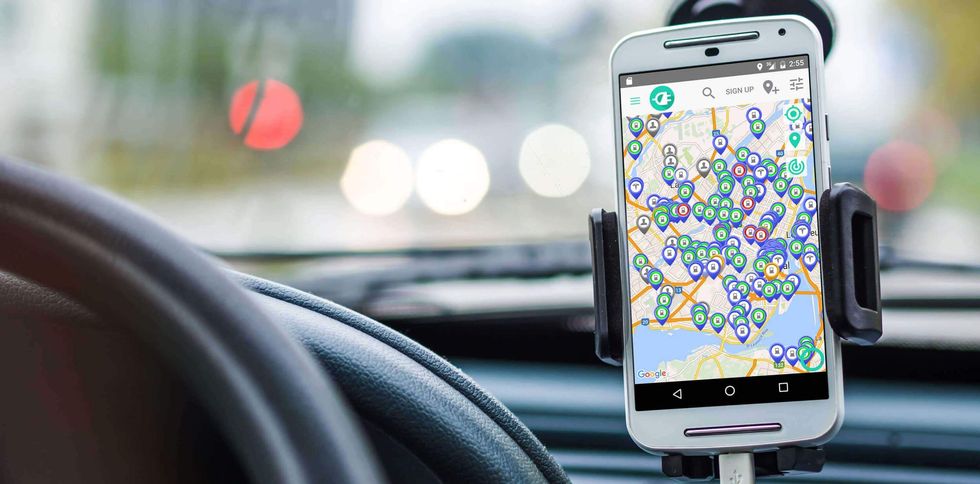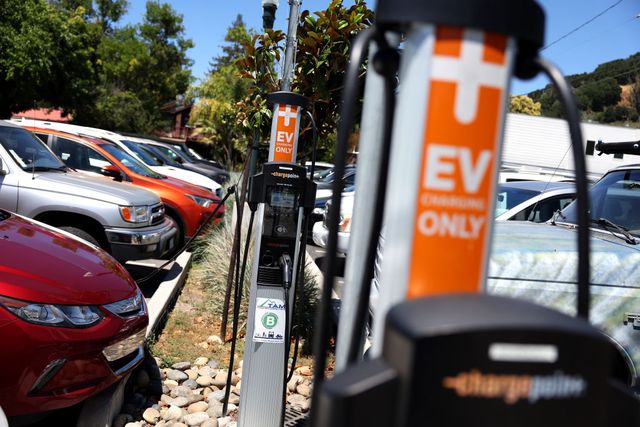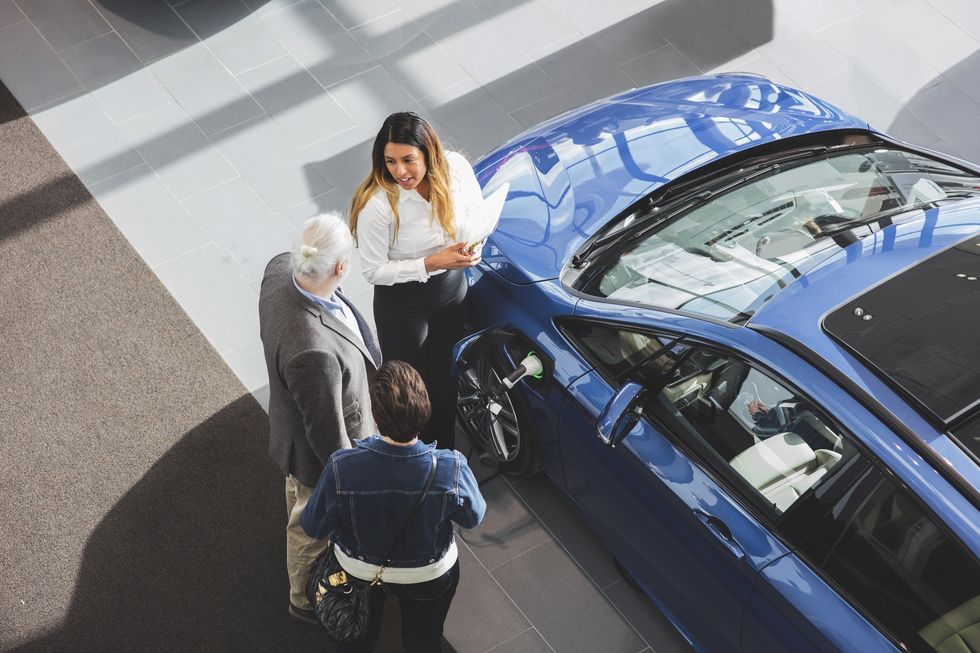- A recent round-trip drive in a Genesis Electrified GV70 reminded us how range anxiety is alive and well.
- Driving an electric car requires different planning and expectations than a gasoline-powered car.
- We share several pointers to make sure your own experience with an EV is less fraught.
It started out so well. I took delivery of the 2023 Genesis Electrified GV70 AWD Prestige, $75,275 worth of luxury battery-electric vehicle, for a drive to the Volkswagen Atlas launch in the Catskills. The drive up was uneventful, but for the return from Saugerties, New York, to Connecticut I had 105 miles to travel and the Genesis indicated 125 miles of range. What could go wrong?
The return trip was fraught, with lots of range anxiety. The experience made it clear why some consumers are still resistant to buying EVs. The news that seven automakers—GM, Honda, Kia, Hyundai, BMW, Mercedes, and Stellantis—would collaborate on a robust fast-charging network is certainly welcome. My trip was nerve-wracking, but yours doesn’t have to be.
Top your tank batteries at every opportunity
Don’t trust your round-trip to the total promised range—always charge at your stop over, if at all possible. On an overnight, the Genesis would have easily fully charged, had we just plugged it in—it has an onboard 10.9-kilowatt charger, and can be fast-charged from 10 to 80 percent in less than 20 minutes.
Never cut it too close in an EV
Understand that electric range is far less precise than what you’ll find indicated in your gas car. Highway driving in an EV will eat into indicated range a lot more than side roads, where brake regeneration adds to the amount of charge in your batteries.
In fact, the range remaining as indicated on your dash assumes a percentage of regen, based on the EPA formula for calculating miles per gallon equivalent, and the freeway offers very little of it. In short, your mileage may vary.
If at all possible, use apps
The best apps not only say what kind of chargers are available at a charging location, but also whether they’re in use—or out of order. Useful third-party apps are from Chargeway, Plugshare, and ChargeHub, as well as supplier apps from ChargePoint, EVGo, and Electrify America. Want to find a hotel with suitable charging? Try EVHotels.
Factor in non-operational chargers…
…and try to eliminate them ahead of time. It’s a big problem, and a hindrance to faster EV adoption.
A recent survey found that only 72.5 percent of 657 public fast chargers in the San Francisco Bay area were in working order. Tesla does better than many of the independent networks. PlugShare allows users to enter notes about whether stations are working or not. That’s good, but the information may be out of date by the time you access it.
Cameron Coursey, with AT&T Connected Solutions, told Autoweek that his company is working on connecting charging stations through fiber and cellular so they can quickly and reliably report breakdowns, which are then fed to the apps and frequently updated.
“There is a wide-open space for developers to work with the EV community to develop some services to help consumers,” Coursey said.
Air conditioning is a range eater
Turn off the a/c if you’re worried about getting to your destination.
A AAA study says that at 90 degrees Fahrenheit using the air in an EV reduces driving range by 17 percent. That seems about right. The Union of Concerned Scientists asserts that EVs with bigger packs tend to use less range from air than those with smaller ones.
Some cars, like the Chevy Bolt, actually track your HVAC’s impact. Pre-cooling your car—something most EVs allow—is also a good idea, as is using seat ventilation in place of air if you have it.
EVs are penalized by their own popularity
Chargers are getting more use. And some of the cars plugged in actually finished charging hours ago.
A solution for public charging like this could be the host institutions putting some kind of time limit on charging, with sign-up procedures. It’s clunky, but it could help.
Some businesses use sign-ups for their employees. The Energy Department recommends, “Employers should consider developing a policy that specifies what employees should do when there are more EVs that need to charge than there are charging stations available.
One solution is a shared calendar that “allows employees to book their charging access in a similar way that employees book conference room reservations.”
Dealerships aren’t really up to speed
On accommodating their EV customers, many dealers aren’t very knowledgeable when it comes to charging. Many lack working chargers, or host too few.
The Sierra Club published a devastating study, updated this year, documenting that lack of dealer preparedness. It concluded that “66 percent of car dealerships nationwide did not have a single EV available for sale.”
A visitor to a Louisiana Volvo dealer reported, “They didn’t have an EV available to test drive. Volvo charges them during the weekend and they told us to come back during the week. Bad practice.”
The club recommends that dealers “partner with utilities to install charging infrastructure onsite to ensure vehicles are charged and available to test drive.”
Channel your inner Lewis and Clark
Apps often get you only to the general area, not the specific location of chargers. For instance, shopping malls can be huge, with lots of nooks and crannies, and an app that directs travelers with failing batteries to the entrance road isn’t being all that helpful.
If you’re an EV owner, share your own tales of adventure in the comments below.
Contributing Editor
Jim Motavalli is an auto writer and author (nine books) who contributes to Autoweek and Barron’s Penta. He has written two books on electric cars, Forward Drive (2000) and High Voltage (2010), and hosts the Plugging In podcast.
Motavalli’s writing has appeared in the New York Times, CBS Moneywatch, Car Talk at NPR, Forbes, US News and World Report, Sierra Magazine, Audubon, and many more. In his spare time, he reviews books and jazz.
Read the full article here





